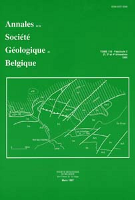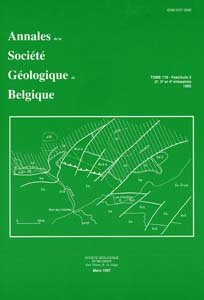- Home
- Publications spéciales = special publications
- La géologie de l'ingénieur - Centenaire de la Soci...
- The characterization of rock for civil engineering practice in Britain
View(s): 1239 (40 ULiège)
Download(s): 20772 (201 ULiège)
The characterization of rock for civil engineering practice in Britain

Abstract
Characterization of rock can be approached from the point of view of geology, and for engineering purposes from the contrasting needs of rock mechanics and engineering geology.
The geological approach is usually concerned with the study of samples of fresh rock and classification is based on mode of origin, mineral content and a variety of textural features. The bases of the classification of the three genetic groups — the igneous, the sedimentary and the metamorphic rocks — are discussed and simplified versions of classifications are presented for each group.
A rock classification to meet the requirements of rock mechanics is concerned with both the rock as a material and the rock in the mass. In particular an essential ingredient is information on physical and mechanical properties, and parameters of use in engineering design. After a review of the development of ideas in classification and characterization, in which the need for cheap index tests to supplement expensive and elaborate engineering design tests as a means of characterizing large areas for design purposes, work carried out on all these aspects in the United Kingdom is discussed.
Acknowledgement of the significance of geological processes in determining how rock masses achieved their present condition highlights the importance of understanding all aspects of the geology of a particular engineering site as a prerequisite of engineering-geological classification and characterization of rock. The engineering-geological approach has high powers of discrimination, and is invaluable in the relatively inexpensive assessment of rock-mass properties of large areas and volumes of in situ rock.
After briefly reviewing early work, a geological classification of rock material simple enough for engineering application, but nonetheless comprehensive, is given. The classification table may be used as an aid to identification with minimal geological knowledge. Provision of a rock name, combined with selected quantified descriptive terms and engineering properties is proposed as a basis for the engineering-geological description of in situ rock and rock material.
Examples are given of the application of engineering-geological characterization of rock in British engineering practice and research.






